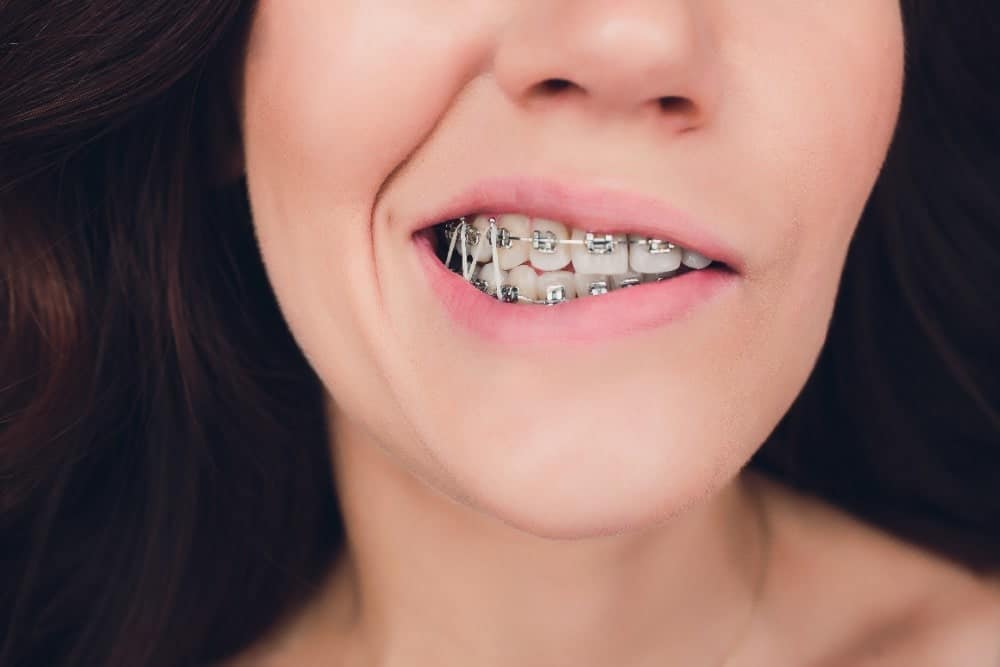If you’re sporting brand new braces, you may be unsure about what all the parts and pieces do. You know they’re all working together to correct your smile, but how?
WHAT DO RUBBER BANDS DO ON BRACES?
Some of the main components of braces are brackets and wires. Brackets, as you’ve discovered, attach to your teeth and wires have the responsibility of moving the teeth to the desired locations within the mouth. What about the rubber bands? Depending on your treatment, you may have a couple of different types of rubber bands, so let’s talk about them.

ELASTIC LIGATURES
The first type of rubber band commonly used with braces is the elastic ligature. These tiny bands have a very important job to do throughout your treatment. Attached to the brackets, which are in turn attached to the teeth, ligatures serve as an anchor point for the archwire.
The archwire is important in that it is responsible for guiding the teeth into alignment. It is attached to the brackets on each tooth with a ligature. Many patients have fun choosing the colors of their ligatures; however, clear options are also available for those who want their treatment to remain discreet.
There are two types of elastic ligatures. The first is the single elastic ligature, which is changed out by your orthodontist each visit because these elastics lose strength over time and use. The second type of elastic ligature is the connective elastic ligature, are also called power chains or c-chains. These are used specifically to close the gap between certain groups of teeth and may be changed out during an orthodontist visit depending on your teeth’s progress.
RUBBER BANDS
Rubber bands are another piece of treatment altogether that not every patient will need. For those who require a little extra help correcting their bite, rubber bands may be used to help improve the alignment of the upper and lower jaw. During the phase of treatment to correct the bite, rubber bands are attached to hooks on the brackets on the upper and lower teeth to help guide the jaws into alignment. Depending on what bite issue is being corrected, the placement of these rubber bands will vary.
RUBBER BAND RESPONSIBILITIES
While you won’t have to do anything with your ligatures, it’s important to adhere to the directions given by your orthodontist when it comes to wearing your rubber bands for maximum results. Failure to wear your rubber bands properly can result in increased treatment duration and even lack of progress. Tips to keep in mind when it comes to your rubber bands include:
- Wear them 24 hours a day
- Remove them only to brush and floss
- Change the bands three to four times daily (or every 12 hours)
- Hooking the elastics onto your braces properly
HOW LONG DO I WEAR RUBBER BANDS?
Depending on each person’s bite, rubber bands or elastics can be worn for six to eight months. Your orthodontist will work with you on providing you with the best treatment plan to perfect your bite and fix any other dental issues. It’s important to wear them 24 hours a day unless instructed otherwise by your orthodontist.
Your orthodontist will give you detailed instructions on how to properly attach and wear your rubber bands. If anything is unclear to you, it’s important to ask questions. The last thing you want is to be wearing your rubber bands incorrectly and not getting the most out of this portion of your treatment.
CAN YOU EAT WITH RUBBER BANDS?
Unlike wearing aligners, you do not have to remove your rubber bands in order to eat or drink. Regardless of your orthodontic treatment style, it is imperative to be mindful of the foods you can eat while going through treatment. The only additional thing to consider with rubber bands is to avoid any foods you have to take large bites out of (like a hero-sized sandwich). This is because opening your mouth too wide can stretch out or break the elastics or cause discomfort.
DO RUBBER BANDS ON BRACES HURT?
Some patients report feeling an increased pressure and tightness in their teeth and jaw when they first begin wearing elastics on their braces. This actually means the rubber bands are doing their job of moving your teeth into place. The discomfort you may be feeling in your mouth is partially due to the tension between the elastics and the braces brackets. This tension is what guides teeth into their correct treatment.
While you may experience some discomfort, it is important to not stop wearing your rubber bands. Not wearing your rubber bands can lead to longer treatment time in braces and can also lead to less than desirable results. You owe it to yourself and your future smile to leave them in.
Sometimes rubber bands can pop out of place or break when opening your mouth wide, like when you’re laughing. It is important to always carry a few back-up bands with you in your purse, pocket, or backpack so you can make sure your appliances have everything they need to help keep your teeth straight.
As you can see, rubber bands and elastic ligatures have important jobs to do during the duration of your treatment with braces. Take care of them and be sure to ask any questions you may have about them. Your orthodontist is there to help!
Your team at Smith Orthodontics will help show you the correct way to wear your rubber bands and assist with any trouble shooting you may need to do. Smith Orthodontics is also here in case you need to pick up more elastics to keep on hand if you run out between appointments. Above all else, your orthodontic team is here to help you achieve your best smile. If you’d learn how we can improve your smile, book an appointment today.
